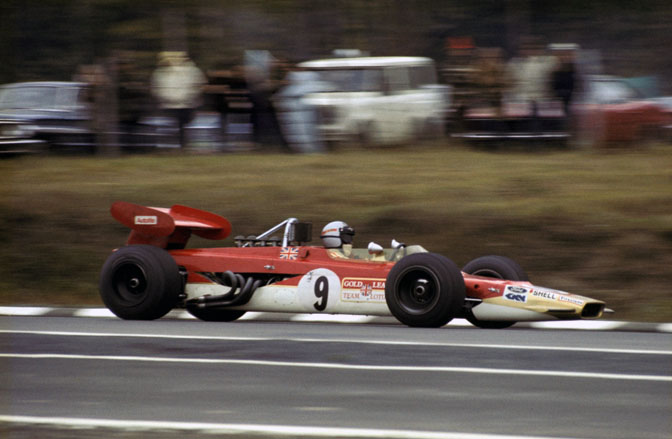

Yes that's right Formula One and AWD!
The combination of motorsport and power to all four wheels did not start with the Audi Quattro, neither did it start with the the Lotus 63 that you see above. Actually back in 1902 Spyker built an all wheel drive machine that won a hill climb. Then fast forward to 1961 and the Ferguson P99, which was built by tractor magnate Harry Ferguson to showcase his new AWD technology. The P99 even had an early Dunlop ABS system and in the hands of Sir Stirling Moss managed a win at Oulton Park. But, and this is a big but, it was front engined at a time when everyone was switching to the mid-engined layout. So that was that, for circuit racing.
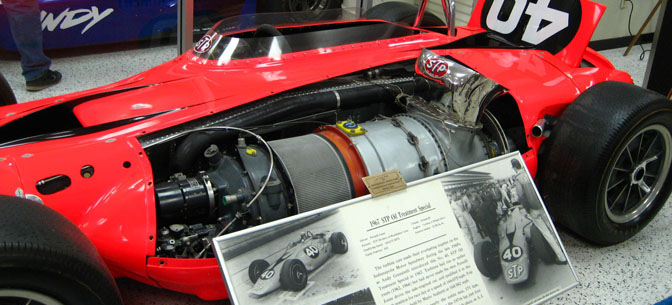
The next serious motorsport application for AWD was at Indianapolis for the 1967 500, the STP Paxton, powered by a Pratt & Whitney gas turbine nearly pulled off an amazing win. Parnelli Jones had almost a full lap advantage when a transmission bearing failed 15 miles from the flag.
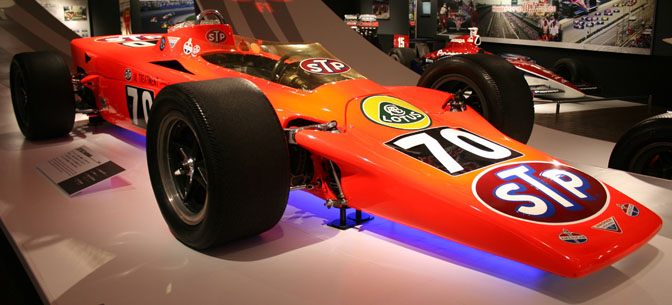
For 1968 STP joined forces with Colin Chapman and Lotus. The result was the Lotus 56, once again AWD and gas turbine power. It was intended to bring a second 500 victory to Lotus and its star driver, Jim Clark. However when Clark was killed at Hockenheim in April, Mike Spence was recruited to take the great man's seat. Spence himself was killed at the Speedway misjudging Turn One during testing in the run up to the race. It was a very dangerous time to be a racing driver.
The team perservered with Joe Leonard taking pole and leading the race right up the last ten laps, then a fuel pump failed. After the race the rules were altered to ban turbines and AWD at Indy.
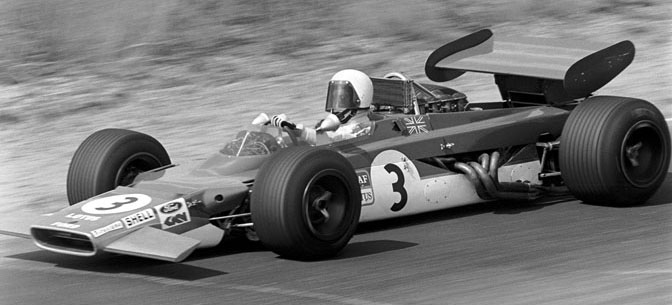
Colin Chapman, the mercurial boss of Lotus was always on the look out for an unfair advantage. He was sure that AWD would be such an item, so he set his team to build up what would become the Lotus 63 to challenge for the title in 1969. Drawing on the experience of the Indy campaign the 63 was an attempt to re-write the design book, trouble is the theoretical advantages seemed hard to achieve in the real world.
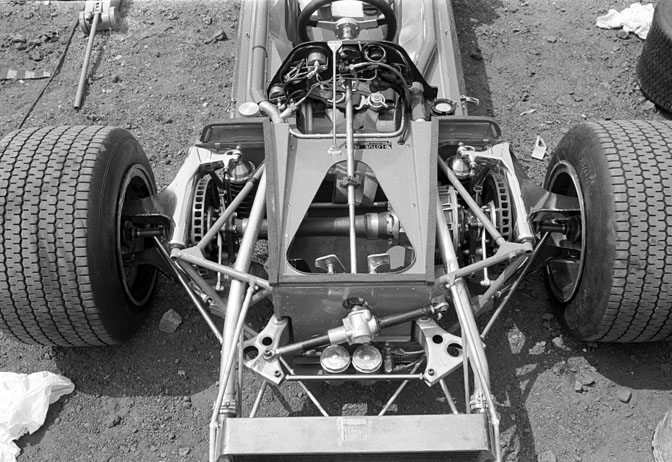
A major problem was that Jochen Rindt, the Lotus number one driver hated the AWD after his US experiences. He refused to even sit in the car. The reigning World Champion, Graham Hill, was not quite as trenchant but he too refused to race the new car. So it was left to the inexperienced John Miles to give the 63 its race debut during the French Grand Prix held at Clermont Ferrand. He struggled with the car's understeering characteristics, managing only one lap before retiring.
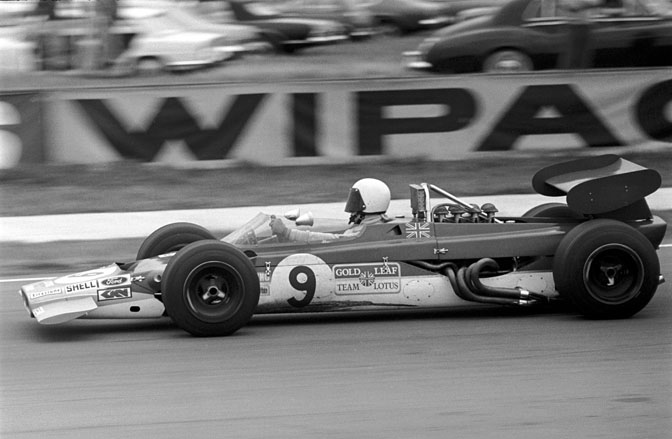
On to the next round at Silverstone but things did not get any better, with Miles managing to hang on and at least finish tenth, although not without transmission problems.
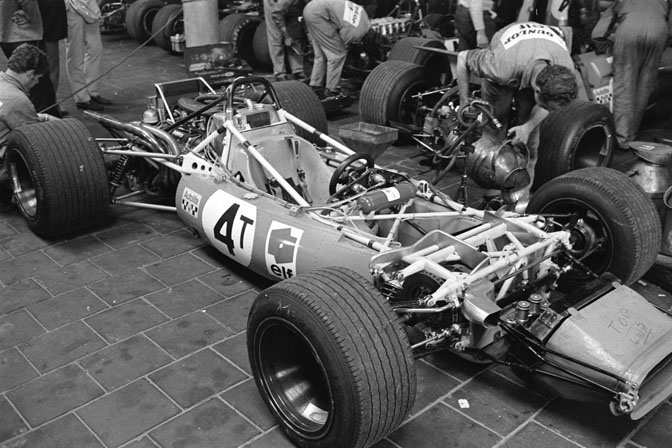
Silverstone was the high water mark for the AWD projects in Formula One. In addition to Miles, Jo Bonnier raced another 63. Joining the Lotii on the grid was a Matra MS84, that Jean Pierre Beltoise was forced to use. The team's number one, Jackie Stewart, had wrecked his own MS10 and took over the Frenchman's car. Thus condemning Beltoise to the overweight and understeering MS84.

The Matra, using a Ferguson FF AWD system, actually ran better than the Lotus and finished three laps up in 9th. The team persisted with the car during the rest of the Championship but gradually the drive was biased towards the rear and in that format Johnny Servoz-Gavin scored a World Championship point for a sixth place in Canada. By the time the circus reached Mexico the Matra's front diff was totally disconnected.
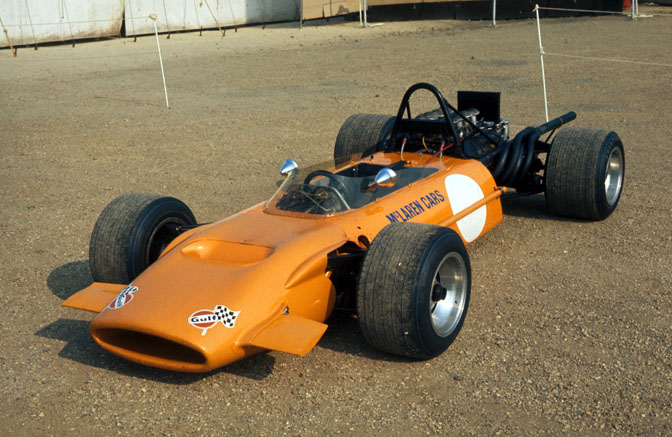
The other AWD car to appear at Silverstone was the McLaren M9A. Like the Lotus and the Matra it suffered from terminal understeer and being too heavy.
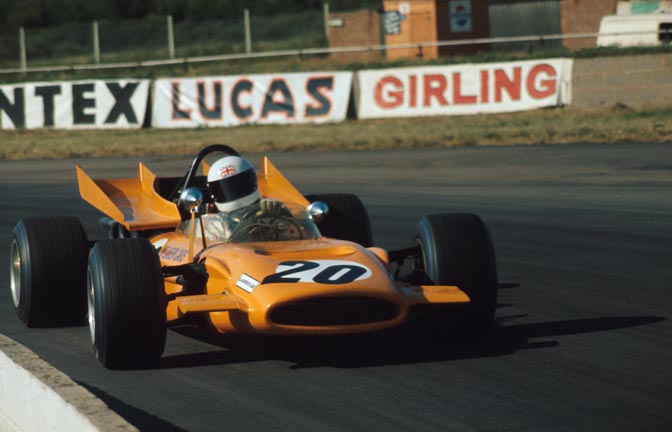
Derek Bell was recruited to drive the car but it became clear that it was never going to match the times of the two wheel brigade.
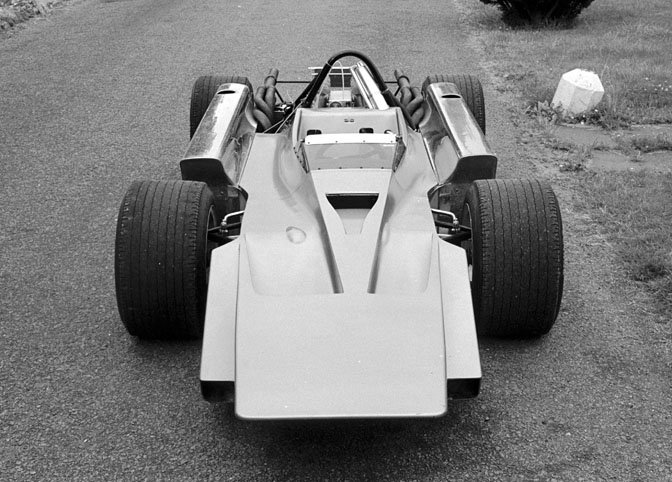
One project that did not make the track was the Cosworth 4WD at least not in competition. The car was supposed to be at Silverstone but after testing it became clear that it was not going to make the grade.
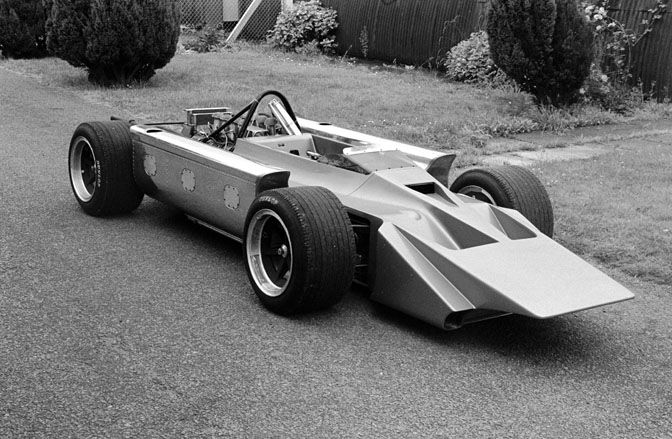
So why did these technological wonders not make the quantum leap forward that their teams foresaw? First off the cars were about 100lbs too heavy, the understeer problems seemed insoluble and did not inspire the drivers. At the same time there was a tyre war on between Dunlop, Goodyear and Firestone, so huge progress was made on that front and the advent of synthetic compounds brought the tyres towards the performance that we take for granted today. Aerodynamics was also becoming a big factor, so squeezing extra performance out of the light relatively simple two wheel drive cars became a much easier and cheaper proposition.
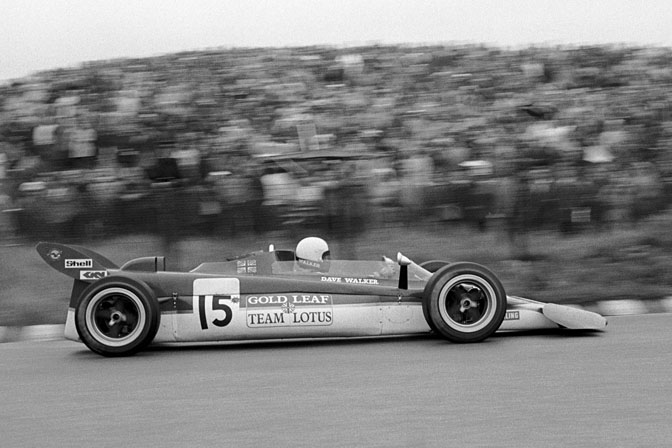
But that was not the end of the story for AWD and F1………..
Lotus resurrected their Indy Car project and ran the Lotus 56 at several Grand Prix in 1971.
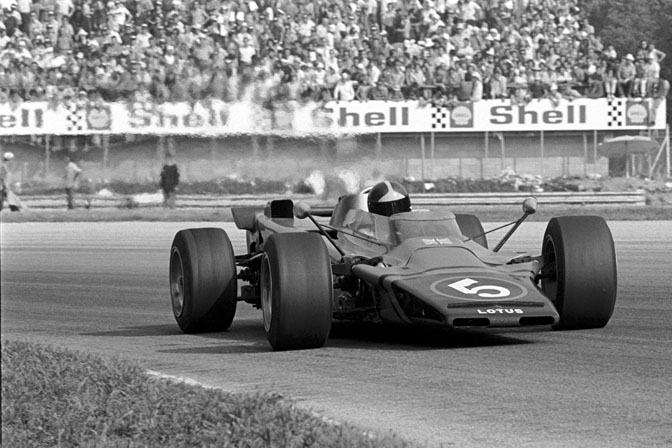
The turbine was another attempt by Colin Chapman to get an unfair advantage…………..but going back to the conventional Lotus 72 was the sensible thing to do, they won the title in 1972.
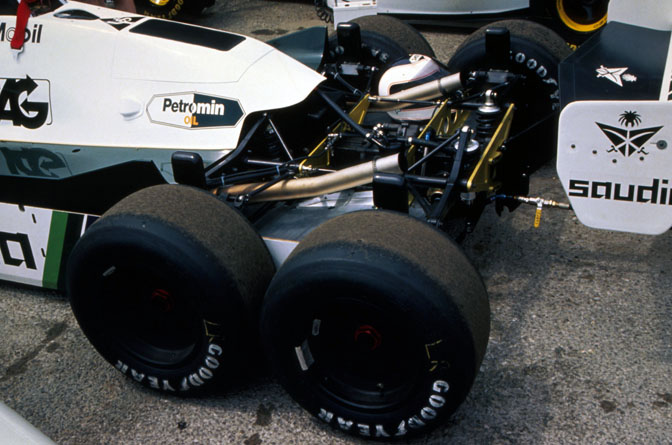
The last footnote in the story of 4WD in Formula One came with Williams building these strange vehicles in 1981 and 1982.
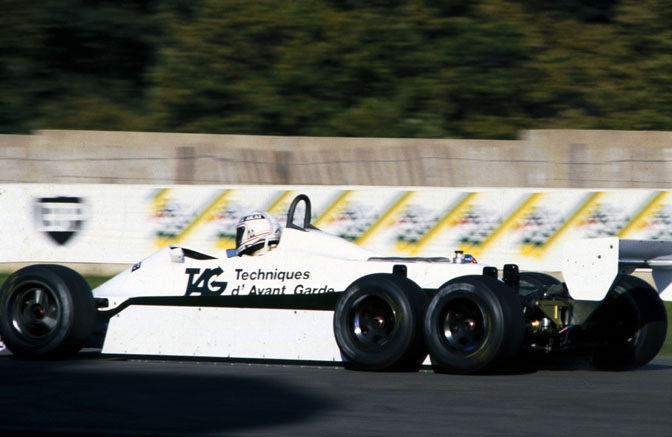
The FW07D and FW08D were an attempt to keep the Cosworth powered Willimas team in front of the turbo crowd led by Ferrari, BMW and Renault. After a few promising tests the FIA changed the regulations to outlaw such six-wheeled contraptions. Williams did not argue too much, they had Honda and their turbo engines on the way.
Now the regulations are so restrictive that nothing like this could happen, maybe when we need solutions to the loomimg energy crisis we should be looking again at this sort of revolution.
-John Brooks
Images courtesy of and copyright Sutton Motorsport Images
Go and look thorough their website, it has one of the largest collection of motorsport images on line.






Great stuff Speedhunters!
It's all politics anyway, if the rules made AWD possible in F1, you would see breakthrough discoveries within months.
wow, I had no idea those six-wheeled cars exhisted, or even raced in F1
There wasn't a Tyrrel version with 6 wheels , but with 4 on the front and not on the rear?
http://images.forum-auto.com/mesimages/310552/GP.%20F.1.%206%20wheel%20Tyrell-Ford%20P34-6%2077%60.jpg
I love this post like no other. Nice job John!!
Awesome post. I can agree with the last sentence of the post.
yeah there should be an unrestricted open wheel racing series....let technology be king. it would change everything. diesel? electric? awd? 6 wheels? what else?
I would've loved to see those cars race. In the old days open wheel racing saw everything from FWD layouts, AWD, six wheeled cars, jet engines, turbochargers, superchargers, 4 cylinders, eight cylinders, V16s and more! And sometimes competing at the same time! I hate that racing has become so cookie cutter. Racing used to spark innovation that would even trickle down to road cars. I wish we could return to the "anything goes" days of Chapparals, Plymouth Superbirds, Tyrell P34s and the like.
Awesome post. I have to agree with bobberz